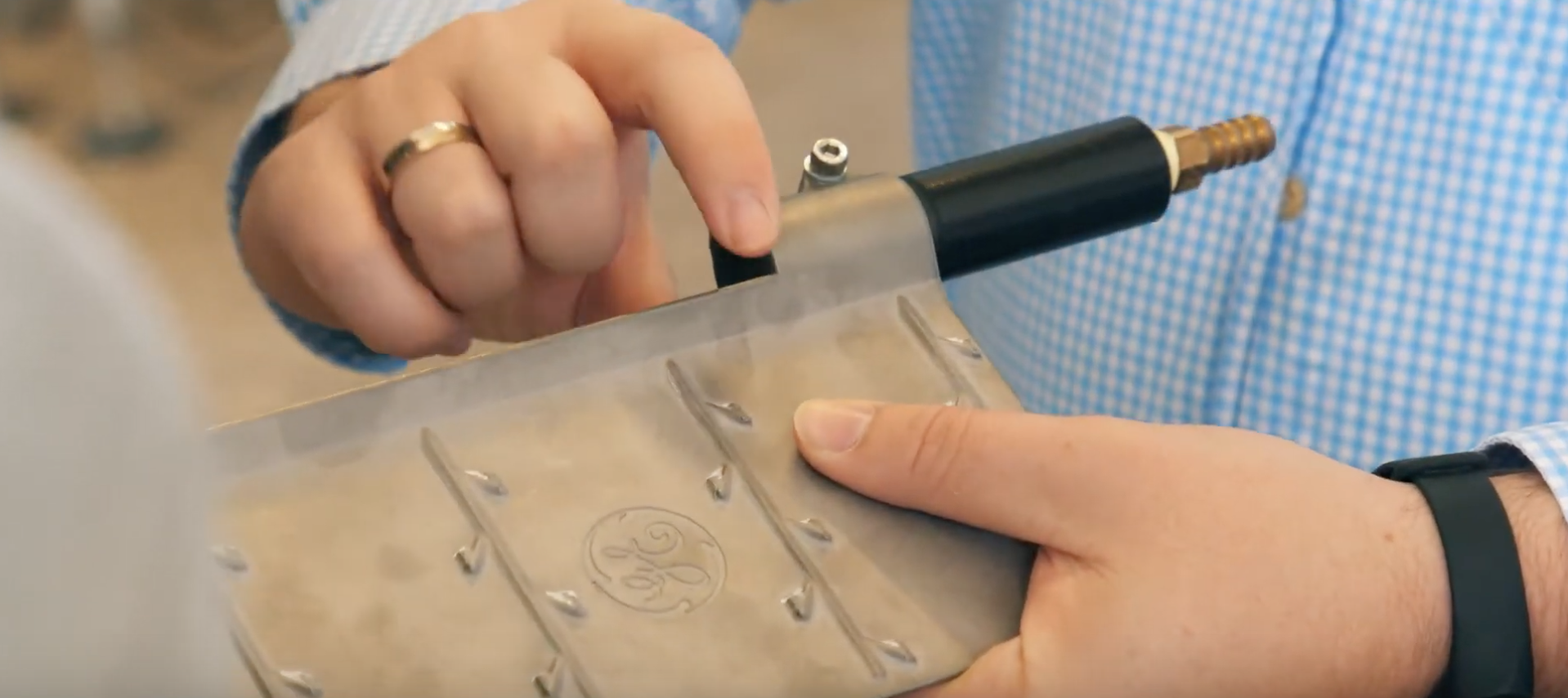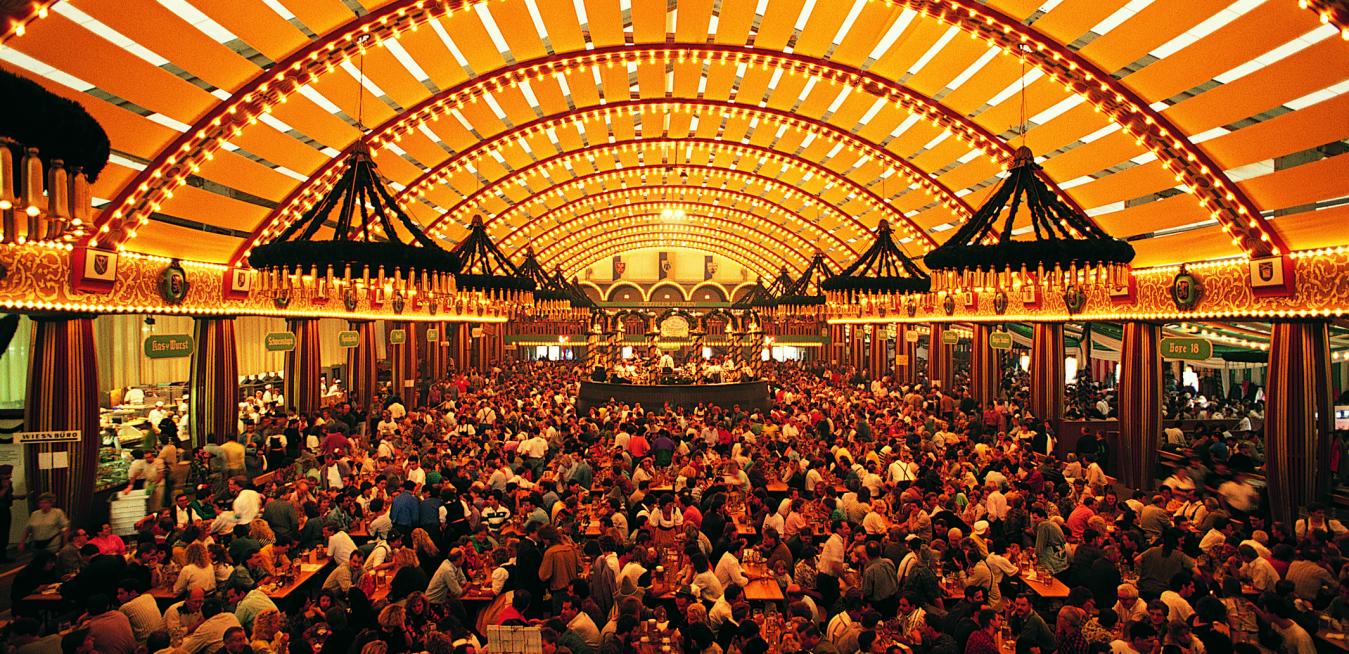The beautiful Bavarian town of Bamberg is home to nine breweries, and plenty of beer cellar legends. Take the story of Bamberg’s famous smoke beer, which supposedly was invented by accident when the smoke from a brewery fire billowed through a pile of malt. Rather than disposing of the smoky grain, the thrifty brewer produced an aromatic amber nectar that turned out to be unexpectedly popular in the town’s beer halls.
Bamberg is still making game-changing discoveries about beer and brewing, but these days the town is counting on technology, rather than serendipity. One of the town’s venerable brewing equipment manufacturers has joined forces with GE to bring the power of 3D printing to the brewing process. Jörg Binkert, who leads research and development at Kaspar Schulz, says that the introduction of a sleek 3D-printed part allows brewers to cut hours off the early stage of the brewing process, ultimately boosting their yield. And yes, that means more beer in less time.
Before we examine the special part, a quick brewing primer. There’s a crucial stage that comes well before any fermenting, and it’s called lautering. The process, which is named after the German word “abläutern,” meaning to rinse off or purify, allows brewers to separate spent grain from wort, the sugary, protein-rich water that later ferments into beer.
Lautering is a bit like making a cup of tea. Water filters through grain in the lauter tun, a giant stainless-steel vessel, gradually sapping the sugar from the malt. The lauter tun acts like a huge tea strainer, collecting the wort for the brew kettle and trapping the grain as sediment for disposal. The tun also plays host to the sparging process, when brewers sprinkle hot water over the grain bed from above to leach more sugar out of the malt.
Just like you can speed up teamaking by squeezing the bag or swirling the leaves, Kaspar Schulz knew there was a way to accelerate the lautering and sparging processes. Their answer was technology that scraped the bottom of the barrel – literally.
The German manufacturers had already zeroed in on the blades on the raking arms, the plows in the bowels of the lauter tun that churn up the heavy grain. Binkert wondered if the raking blades, which are roughly the size of a meat cleaver, could kill two birds with one stone. He shared some of his sketches with GE’s Munich team, who knew they could help. The result might become one of Bamberg’s brewing legends.
Using additive manufacturing (AM), the catchall name for 3D printing, GE’s engineers have designed a new blade that transforms it from a pedestrian plow into a smart sprinkler. The blade now boasts special internal channels that run down its side like metallic veins, allowing it to inject water into the heart of the malty sludge as it chops and churns away. “The blade now rinses the spent grain bed more efficiently, saving hours of time,” says Matthew Beaumont, the site leader for GE Additive’s Customer Experience Center in Munich. Imagine making tea with several tiny teaspoons that shoot jets of boiling water into the tea leaves while they stir, and you are getting the picture.

Above: Kaspar Schulz, a brewery equipment maker in the Bavarian town of Bamberg, has joined forces with GE to bring the power of advanced manufacturing to beer brewing. A new 3D-printed part developed by GE Additive cuts hours off an early stage in the brewing process. The result: more beer in less time. Images credit: GE Additive. Top image: Octoberfest is in full swing in Munich this month. Image credit: Getty Images.
Benedikt Roidl, an advanced lead engineer at GE Additive, explains that the 3D-printed parts work by creating “an induced swirling flow field” to “dynamically loosen” the spent grain. “These AM channels create turbulent flow, pumping water into the grain while simultaneously slicing through it,” adds Beaumont. There is a good reason why Roidl and Beaumont are using vocabulary you would normally associate with jet engines: The GE team leaned on knowledge and expertise from the aerospace industry in their blade design.
This aerodynamic know-how has cut the time of the lautering and sparging process by almost 50%. It used to take approximately two hours for the sugar concentration of the grain to fall below 2%, meaning it was ready for disposal. “We have cut that to below one hour, meaning brewers can double the amount of brews in one day,” says Binkert. “This was just not possible with normal parts.”
Beaumont is proud of turning Kaspar Schulz’s on-paper ideas into metallic reality. He explains that it takes the M2, the workhorse of GE Additive’s Concept Laser system fleet, around 24 hours to print a blade from a large molehill of fine metal powder. The M2 uses lasers to melt layers of powder into complex metal 3D geometries, meaning that the blade rises like a phoenix before your eyes. Beaumont watches these metal objects take shape and form with a sense of wonder. “It’s a feeling that never gets old.”
Beaumont also enjoyed collaborating with good neighbors. “Our Concept Laser facility is just down the road in Lichtenfels, and some of our team have connections to the Bamberg brewing scene, so — pardon the pun — we were able to tap into some local knowledge.”
Make that three centuries of local knowledge. Kaspar Schulz is the oldest brewing equipment manufacturer in the world. It began supplying brewpubs with finely forged copper kettles in 1677, almost two centuries before Germany existed as a nation state. The company now makes the full range of the beer-brewing kit, says Binkert, “from brewing vats and fermenting containers to software — absolutely everything.”
It looks like 3D-printed racking blades might be Kaspar Schulz’s first step into additive manufacturing. “We think we’re just at the beginning in terms of ideas.” The next frontier in the beer industry is continuous brewing, says Binkert. “We have tried, but we haven’t got the right machinery right now, but perhaps in three to four years?”
In the meantime, Beaumont and team are keen to prove their design using only the strictest scientific methods. “We want to verify the benefit in via chemical analysis of an actual batch of wort,” he says. “And of course a taste test.”
This article was originally published on GE Reports.
